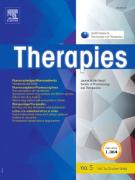Pregnancy outcome following in utero exposure to azathioprine: A French comparative observational study - 01/06/18

| pages | 9 |
| Iconographies | 1 |
| Vidéos | 0 |
| Autres | 0 |
Summary |
Aim of the study |
To evaluate whether azathioprine exposure during pregnancy increases the risk of birth defects and prematurity.
Method |
Prospective comparative observational study using the French pregnancy database TERAPPEL. To evaluate birth defects, outcomes of pregnancies exposed to azathioprine during the 1st trimester were prospectively assessed and compared to that of pregnancies exposed to another drug used for the same indications. Secondly, the rate of preterm births was compared between fetuses exposed to azathioprine at least during the third trimester and those exposed during the first trimester only.
Results |
From 447 requests for a risk assessment for women receiving azathioprine during pregnancy, 193 pregnancies meet inclusion criteria. One hundred and twenty-four of them were exposed to azathioprine during the 1st trimester and were compared to that of 124 pregnancies exposed to another drug used for the same indication. Azathioprine use during the first trimester was not statistically associated with the risk of all birth defects ([7.3% vs. 5.4%]; [OR=1.36; 95%CI: 0.44–4.20]) nor with major birth defects (5.2% vs. 1.8% [OR=2.96; 95%CI: 0.56–15.64]). The rate of preterm births (22.5% vs. 27.3%, P=0.579) was similar regardless of the exposure period to azathioprine (at least during the third trimester or during the first trimester only).
Conclusions |
This study confirms that first trimester exposure to azathioprine is not associated with an elevated rate of birth defects and that the high rate of preterm births among women exposed to azathioprine is probably explained by the underlying maternal disease.
Le texte complet de cet article est disponible en PDF.Keywords : Azathioprine, Pregnancy, Birth defects, Congenital abnormalities, Prematurity
Plan
Vol 73 - N° 3
P. 199-207 - mai 2018 Retour au numéroBienvenue sur EM-consulte, la référence des professionnels de santé.
L’accès au texte intégral de cet article nécessite un abonnement.
Bienvenue sur EM-consulte, la référence des professionnels de santé.
L’achat d’article à l’unité est indisponible à l’heure actuelle.
Déjà abonné à cette revue ?

